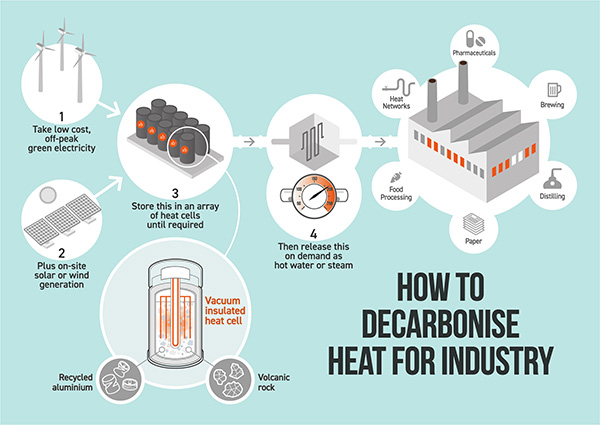What Is Trenchless Technology In Construction?
Trenchless technology is simply the method to install, renew, and repair underground cables, pipes, and ducts with none to minimal excavations from the earth’s surface. As per the OSHA repost for trenchless technology, this modern digging method has benefited numerous projects in addition to minimizing disruption to residential areas.
This technology makes several induction processes quite easy such as; installation beneath canals, rivers, and other obstructions is also conceivable using trenchless techniques with little interruption to the surrounding area.
However, trenchless technology, also known as “no-dig” technology, refers to a set of construction and repair methods that allow for the installation, replacement, or rehabilitation of underground infrastructure without the need for extensive excavation and traditional open-cut methods. This technology is used to minimize disruption to the environment, traffic, and surrounding infrastructure.
Important Stats for Using Trenchless Technology in the Construction Industry
The statistics show the significance of using trenchless technology in the construction industry;
- In North America, the market size of trenchless pipe rehabilitation will be increased to $6.48 billion by 2023.
- The Trenchless pipes rehabilitations market size was noticed at $4.12 billion in 2022 and is expected to grow to $4.37 billion in 2023.
- More than 20,500 projects related to Trenchless technology have been completed collectively in the past years.
7 Different Methods of Trenchless Technology
This involves drilling a pilot hole along a predetermined underground path and then enlarging it to accommodate the desired utility (such as pipelines or cables). It’s commonly used for installing utilities beneath rivers, highways, and other obstacles. The method is frequently employed when conventional excavation or trenching is impractical or when only a small amount of surface disturbance is needed.
The installation of subterranean utilities like pipes or cables in a comparatively deep arc or radius following an established subsurface path using surface-launched drilling equipment is known as directional boring, sometimes known as horizontal directional drilling (HDD).
This method is used for replacing old or damaged pipelines. A bursting head is pulled through the existing pipe, breaking it apart while simultaneously pulling a new pipe into place. Pipe bursting is a method of replacing underground pipelines (for example; natural gas pipes, sewerage, or water) that does not need digging a standard construction trench. Instead of a trench, “launching and receiving pits” can be used to lay pipes.
In a pipe-bursting process, five essential pieces of equipment are used including a polling machine, a hydraulic power pack, a retaining device, and an expander head.
Using this method, a new pipe with a lower diameter is inserted into a previously installed pipe. It can be used to fix pipelines that have mild rust or damage. A method of fitting with uninterrupted pipes and lining with separate pipes are both referred to as sliplining. In this technique, a new pipe is inserted by being pulled or pushed into an existing pipe, and then the annular area is grouted. A series of discrete pipes or a continuous pipe may be employed.
Drilling non-vertical wells is known as directional drilling (also known as slant drilling). It can be divided into four major categories: surface in seam (SIS), which horizontally contacts a vertical well target to recover coal bed methane, utility installation directional drilling, directional boring, and oilfield directional drilling.
A passageway constructed underground or above ground to carry utility lines like steam, electricity, sewage lines, & water supply pipes is known as a utility tunnel or utility corridor. Cable television, telephone, and fiber optic communications services are occasionally carried as well. One may also be called a cable vault, services trench, services tunnel, or services vault.
Shorter wire isolation is frequently referred to as an underground conduit or cable duct. However, direct-buried cabling is a significant substitute as compared to ducts or tunnels.
Trenchless tunneling methods involve creating tunnels underground for various purposes, such as transportation, utility installation, or environmental remediation. In simple words, an excellent substitute for conventional pipe replacement is trenchless pipe lining.
Traditional pipe replacement takes more time, costs more money, creates more mess, and harms your yard more. Lining is different from digging in that it involves far less excavating, requiring less time and labor to finish. When a pipe is formed inside another pipe, this is called lining. This pipe preserves the durability of the current one without harming the surrounding building or landscape since it is made of a unique epoxy.
Similar to HDD, Microtunneling is used to create small-diameter tunnels for utility installation. It’s controlled by remote guidance systems and is often used in urban areas.
Microtunneling is the digging method or technique that is used to create small tunnels. It is difficult for a machine to be driven by an operator in these narrow tunnels. So, the Microtunnel Boring Machine (MTBM) must have to be remotely controlled from a control room.
However, Microtunnel Boring Machines are similar to regular tunnel boring machines (TBMs), but on a smaller scale. These machines typically range from 0.61 to 1.5 meters (for instance; 2 ft. 0 in to 4 ft. 11 in). These machines are completely operated by a controller from its room on the earth’s surface.
Any construction project, including trenchless operations, must reduce the dangers to the environment and the general public. While trenchless techniques strive to reduce disturbance and environmental damage, specific safeguards and procedures can further reduce risks.
Here are a few methods to accomplish this:
Enhanced Workplace safety
OSHA standards compliance aids in reducing workplace fatalities, injuries, and accidents. It protects workers from potential risks like falls, exposure to toxic substances, and electrical mishaps and encourages a culture of safety.
Environmental Impact Assessment
Conduct a thorough analysis of the environmental impact before starting trenchless activities. Determine any potential effects on the area ecosystems, water, air, and soil. Create plans to reduce. Make sure to use the equipment that helps to maintain the environmental condition as well as workers’ health and safety.
However, operations run more smoothly when the equipment is well-maintained and effective. Regular maintenance keeps workers safe by preventing equipment failures and decreasing downtime from breakdowns.
Prepare worksite properly
Assign knowledgeable managers to supervise trenchless activities. Their direction makes ensuring that work is done safely and effectively, reducing costly errors. Utilize technology to improve safety and effectiveness, such as real-time monitoring, remote sensing, and equipment tracking. Incidents and downtime can be avoided due to these types of technologies.
All employees who are involved in trenchless activities should receive appropriate training. Workers who have received proper training are more productive and less likely to violate safety regulations, reducing the risk of fines and project delays.
Offer competitive advantage
Engineers and contractors can work together to interpret and implement regulations that pertain to trenchless operations. Everyone who is involved in trenches operations should exchange safety-related paperwork, such as danger assessments, incident reports, and training logs. By doing this, accountability and transparency are maintained.
Trenchless construction frequently results in cost savings, partly because it prevents the need to relocate existing utilities. Alternative tunneling techniques interrupt subsurface utilities more, and whether you transfer those services or divert your digging plans to avoid them, your costs could quickly increase.
However, trenchless technology is considerably higher in price than deep-cut excavation, but it frequently costs less in the long term because it doesn’t interfere with utilities.
In recent years, trenchless techniques’ capabilities and trustworthiness have increased. Knowledgeable and qualified owners are aware of the importance of choosing the best trenchless technique(s) for a project’s success, safety, timeliness, and cost-effectiveness.
ensure that they meet quality standards to protect property from attempted burglary and vandalism. Some of the requirements within these standards overlap but each is intended to meet a specific criteria and this publication outlines how these apply, together with the levels of testing which products must undergo.


 ensure that they meet quality standards to protect property from attempted burglary and vandalism. Some of the requirements within these standards overlap but each is intended to meet a specific criteria and this publication outlines how these apply, together with the levels of testing which products must undergo.
ensure that they meet quality standards to protect property from attempted burglary and vandalism. Some of the requirements within these standards overlap but each is intended to meet a specific criteria and this publication outlines how these apply, together with the levels of testing which products must undergo.


